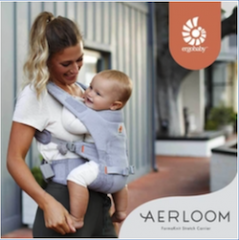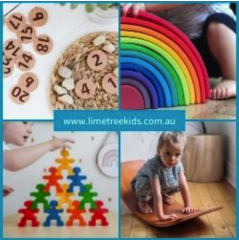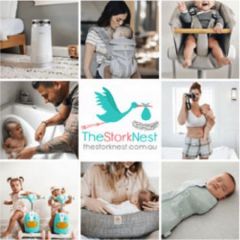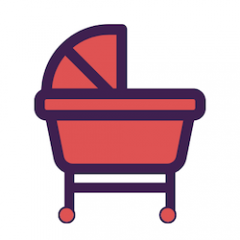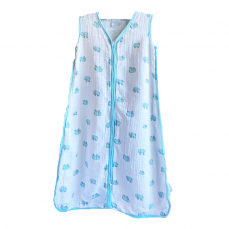Setting up a Safe Sleep Surface Sleep Suitable for stages: 0 - 3 Months, 3 - 6 Months, 6 - 12 Months
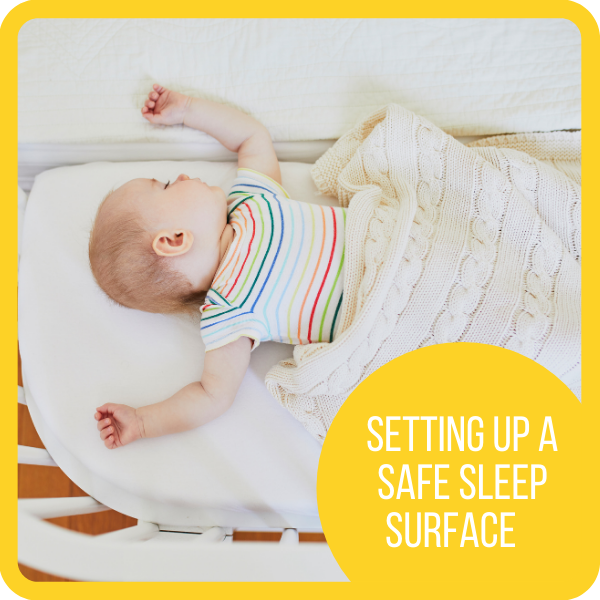

Babies sleep a lot and at all hours of the day and night. It's a beautiful thing to hold your baby while they sleep, admire their little features and stroke their skin. While you can carry your baby in-arms during the day, in a carrier or lie down with your baby while they sleep, you can't do this all the time, and you need to rest too.
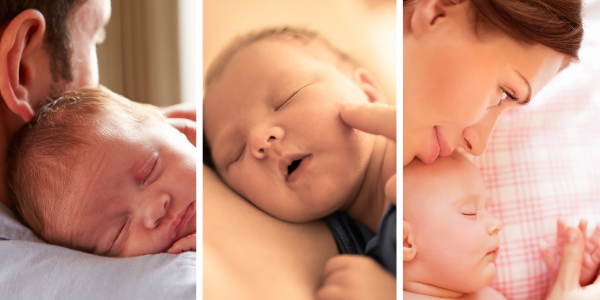
Once you start thinking about where your newborn is going to sleep, you will see that there are many ways to set up a safe sleep surface that will come down to preference, safety considerations, space, and your baby's temperament.
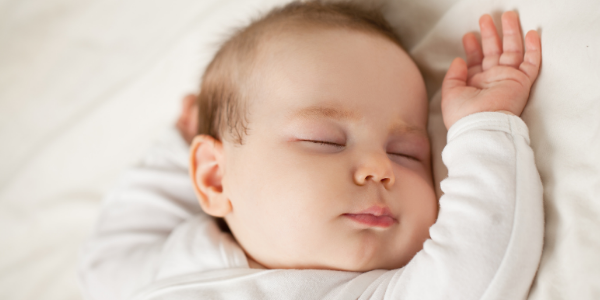
Where you choose to sleep, your baby is up to you. You may decide based on the physical bedroom space you have and the adults' sleep needs/behaviours (e.g. light sleepers, snorers, shift workers etc.). It is also something that needs to be flexible according to your baby's night needs and temperament. The typical recommendation is to have newborn babies sleep in the same room as at least one of the parents (usually the mother) for ease of night monitoring and attending to night needs and feeds. This is recommended for at least the first 6 months due to the higher risk of SIDS during this time period.
If you are breastfeeding, the night set-up can make a big difference in managing night feeds and your night milk production. This can play a big part in whether your breastfeeding relationship continues over the long term. There are some great books and resources for breastfeeding families, which can be found in our related article on 'Where to go for gentle sleep advice'.
The first requirement for a safe sleep surface for a newborn is a flat surface to lay them on their backs according to SIDS guidelines. Many parents choose to start their baby on a smaller sleep surface, such as a bassinet, for the first 3-6 months. Others start their baby in a cot from the beginning. Cots usually have a higher setting for smaller babies, which can be lowered when your baby becomes mobile. Any equipment you choose to use, you should be aware of the potential hazards by reading the safety instructions and being prepared to provide supervision around their use. Rednose.org.au have these articles, which might be a good place to start on what products you don't need and Baby safe sleeping products.
When you are considering what to buy for your newborn, you also might think about the next step. You might weigh up the pros and cons of your short and long term options. Above all, your baby's safety and getting their needs met while you are getting enough sleep to function are the most important outcomes.
Rednose.org.au recommends that 6 months is the earliest age for babies to sleep in their own room. There are many reasons why your baby can continue to have disrupted sleep well into toddlerhood. We discuss many of the reasons in our article Want more sleep? 10 questions to ask yourself.
What are your sleeping surface options?
Co-sleeper Bassinet (or sidecar bassinet)
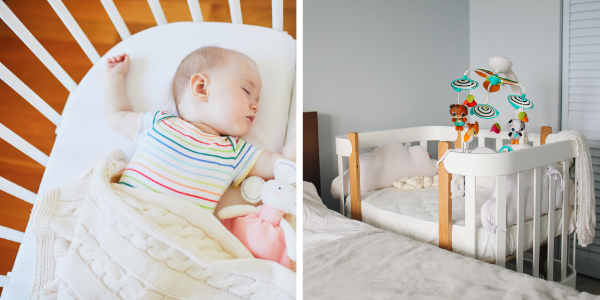
These are free-standing bassinets usually suitable for up to 3 to 6 months which can be secured to the side of any sized bed, adjust to match mattress heights and have a drop-down side. The idea is that you have easy access to your baby to settle them and breastfeed during the night. Different brands and models may have the following selling features:
- Rocker legs so that you can rock your baby in the bassinet for settling them.
- Legs have 2 or 4 wheels so that you can move it to different rooms in the house.
- Collapsable/folds up to easily transport- such as the Original Arm's Reach Co-sleeper.
Search for Co-sleeper at the Baby Bunting eBay Store
Stand-alone bassinet
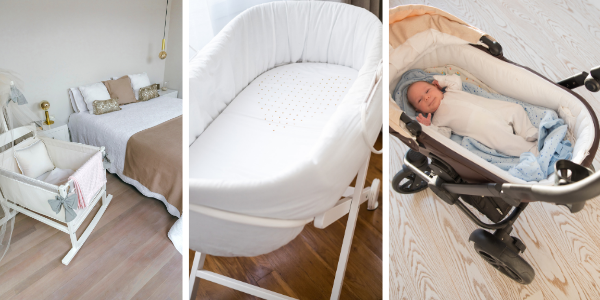
These don't attach to the bed but are freestanding frames and bassinets suitable until your baby becomes active and starts to roll. Rednose.org.au warns that there is a safety standard that cots must comply with, but this is not the case for bassinets. Productsafety.gov.au has safety information on many baby products, including bassinets, cots and folding cots (intended for travel). Once you know the hazards and how to make sure the products you use are safe, you can focus on your baby rather than worrying. There are many types, including:
- A frame which is compatible with your pram Bassinet attachment - This saves buying a separate bassinet, making better use of the bassinet included with your pram/stroller.
- Moses basket with stand
- Legs have 2 or 4 wheels so that you can move it to different rooms in the house.
- Rocker legs so that you can rock your baby in the bassinet for settling them.
- The bassinet attaches to a tripod frame and can swing freely.
If you are considering a second-hand bassinet, make sure you are happy with the home it has come from and examine all the parts carefully before you take it. Wash or wipe down all surfaces and fabric parts, including the mattress, and dry in the sun. If the mattress has a fabric outer, it would be better to buy a replacement mattress. If the mattress has a waterproof cover, check for mould or stains, and replace if in poor condition.
Shop Bassinettes on eBay.com.au
Bassinettes at the Baby Bunting eBay Store
Cot
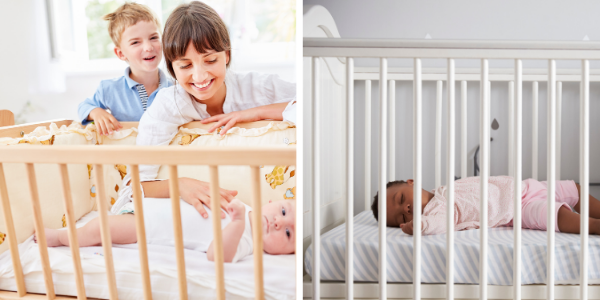
Cots can usually be adjusted with the mattress on a high setting for young babies and can be lowered as your baby starts to sit up and stand in the cot. Rednose.org.au recommends cots as they lay baby flat on their back and place young babies at the bottom end of the cot where they can't wriggle down. Any cots sold in Australia must adhere to Australian safety standards. Many parents find lifting their young baby in and out of a cot difficult and tiring at night. Cots can be placed up to the bedside, but unless you can drop one side or remove one side of the cot (which is against the standard, but some parents do sidecar cots in this way), you will still need to reach over and bring your baby into the bed or somewhere else to feed them at night. Different features of cots include:
- Materials can be solid wood, painted engineered wood (such as MDF or particleboard, which is shredded wood bound usually by urea-formaldehyde glue), or metal - take note of the materials and finishes.
- Drop-side for ease of lifting your baby in and out
- Convertible to toddler or junior bed where one or both sides can be removed completely or partially, or a conversion/extension kit can add size to the original cot. Some cots convert to a day or sofa bed for use after the toddler years have passed.
If you are considering a second-hand cot, it is recommended to buy a new mattress, being sure to buy one of the same dimensions, so it doesn't have any gaps and fits flush to the cot sides.
Cots & Cribs at the Baby Bunting eBay Store
Baby Cots & Cribs on eBay.com.au
Sleep Nest
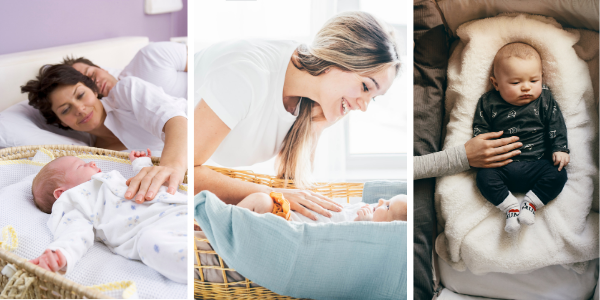
These are designed as a safe sleep space on any firm surface, such as a mattress with padded walls or solid walls. Despite their safety claims, most products available are not recommended by rednose.org.au due to SIDS risks related to their padded pillow-like sides. In contrast, studies and public health campaigns promote the use of pēpi-pod sleep space and the traditional weaved basket in Maori culture, the 'wahakura'. In Finland, the government has been giving away a baby box with essential items for the baby, and the box can be used as the first bed for the baby - such a great idea!
Parent’s Bed or another Full-Sized Bed
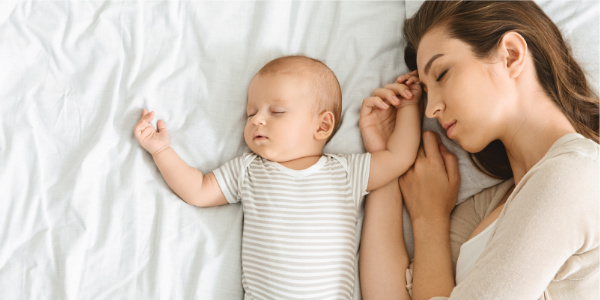
Bedsharing is a traditional parenting practice in many cultures worldwide, usually where there are high rates of breastfeeding, floor beds are common, and they know how to bedshare safely. For example, Japan has one of the highest bed-sharing rates and one of the lowest SIDS rates. When shopping for beds in Japan, they have mattress sizes for families of 3 or more. In many other parts of the world, sleeping with young children until they are ready to be independent is expected behaviour and a way to keep them safe and secure at night.
The reason bedsharing is not generally recommended in Western cultures is due to the number of bedsharing deaths that have occurred with babies generally under 3 months old. The bed-sharing deaths that have occurred have been found to have common preventable causes and risk factors. Public health campaigns and advice that bedsharing is wrong and parents should stop, don't serve the large percentage of parents who co-sleep either unintentionally, occasionally or intentionally regularly. In recognising a need for parents to make informed decisions in relation to all their sleep choices to create a safe sleeping environment, the safe sleep 7 bedsharing guidelines have been developed by the La Leche League, and the Safe Cosleeping Guidelines have been developed by James McKenna (a leading researcher in Mother-Baby Behavioural Sleep studies). The question of Is bedsharing safe? isn't a straightforward answer. It's more of an, it depends since the research has identified a lot of variables.
Whether you intend to have your baby in your bed or not, you must know the risk factors and how to avoid them. The safe sleep 7 should be followed if your baby is ever sharing a sleep surface. There will be times when your baby needs hands-on comforting, and you will be exhausted. It is better to give yourself a safe option to lie down and relax with your baby than to have no option than on a couch or sofa, which carries far more risk of accidental falls or suffocation.
Parents and babies who don't have any of the risk factors making it unsafe to bedshare may wish to bedshare and commit to doing it safely to enjoy the benefits of more sleep, a longer breastfeeding relationship, and bonding/attachment reasons. In these cases, there are many creative ways of achieving safe bedsharing arrangements. The safest option is to use a floor bed / put your mattress on the floor. Putting the mattress against the wall or using bed rails are not recommended for small babies as these can still create gaps. For older babies and toddlers, a low height bed with gap-free safety bedrails or bumpers can work well. You could also have the smaller bed in the corner of the room and pushed against your bed at the same or lower height than your bed. It is possible to skip the cot altogether in favour of buying a full-sized mattress which will mean you can comfortably lie down with them for years to come when needed.
Other Decisions
Once you have chosen your sleep surface/s for your baby, you will need to consider the mattress, bedding and product materials. Whatever you choose needs to be suitable for your baby to sleep on and be surrounded by.
Mattress
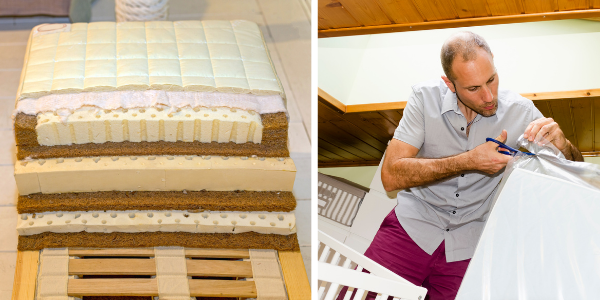
The quality of any mattress you choose for your baby is worth thinking about. Mattresses are typically made of memory foam and/or inner springs with foam. Most require fire-retardant chemicals to be applied to combat the flammable nature of the foams. If this is what you have or will be getting, consider allowing it to off-gas outside or near an open window for a couple of days before using it and anytime you change the bedding, leave the mattress exposed over the day with an open window. Alternatively, some mattresses and mattress toppers are made from natural latex and /or naturally flame-resistant wool. These mattresses are typically found at stockists selling organic products.
Search for Organic Cot & Crib Mattresses on eBay.com.au
Materials & Bedding
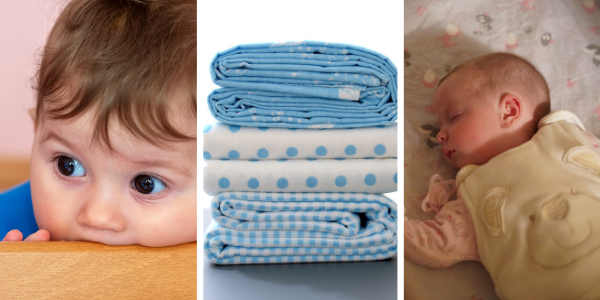
Whatever furniture and bedding you choose, consider the materials' safety and finishes when the baby starts to teethe on everything in sight when they are more mobile.
Chemicals can also be applied to fabrics of mattress or pillow protectors, doonas and pillows for dust-mite resistance so pay attention to anti-dust-mite claims and what that means.
Before your baby arrives, it's a good idea to have a few sets of sheets that fit their first bed. You can always buy more if needed; otherwise, your baby may enjoy wearing a sleeping bag, a fitted swaddle, a gown, or be wrapped in a muslin or blanket for sleeping. Where you can, buy natural fibre organic products.
Search Nursery Bedding at the Baby Bunting eBay Store
Search Organic Cot Bedding at Amazon.com.au
Whatever you choose, you will be guided by your baby's needs and what arrangements can support your sleep and feeding arrangements. Whatever sleep surface you choose, if you follow the safety recommendations and do what feels right for your family, you can't go wrong.
Please note: Above all, any information on this website aims to provide general ideas for informational and educational purposes only. We encourage users to investigate several information sources, including, where necessary, independent individualised medical advice before making any decisions that could affect you or your child’s health or wellbeing.
* BabyPeg participates in various affiliate programs and may earn a commission for referring our users through the links provided. This is at no additional cost to our users. We take great care in choosing products and services which align with the mission of promoting better health and wellness for our BabyPeg community. Where possible, products are tried and tested by us. To continue to provide BabyPeg as a free service and reach as many parents as possible, we appreciate your support in using the link provided to purchase if you decide the product is right for you.

